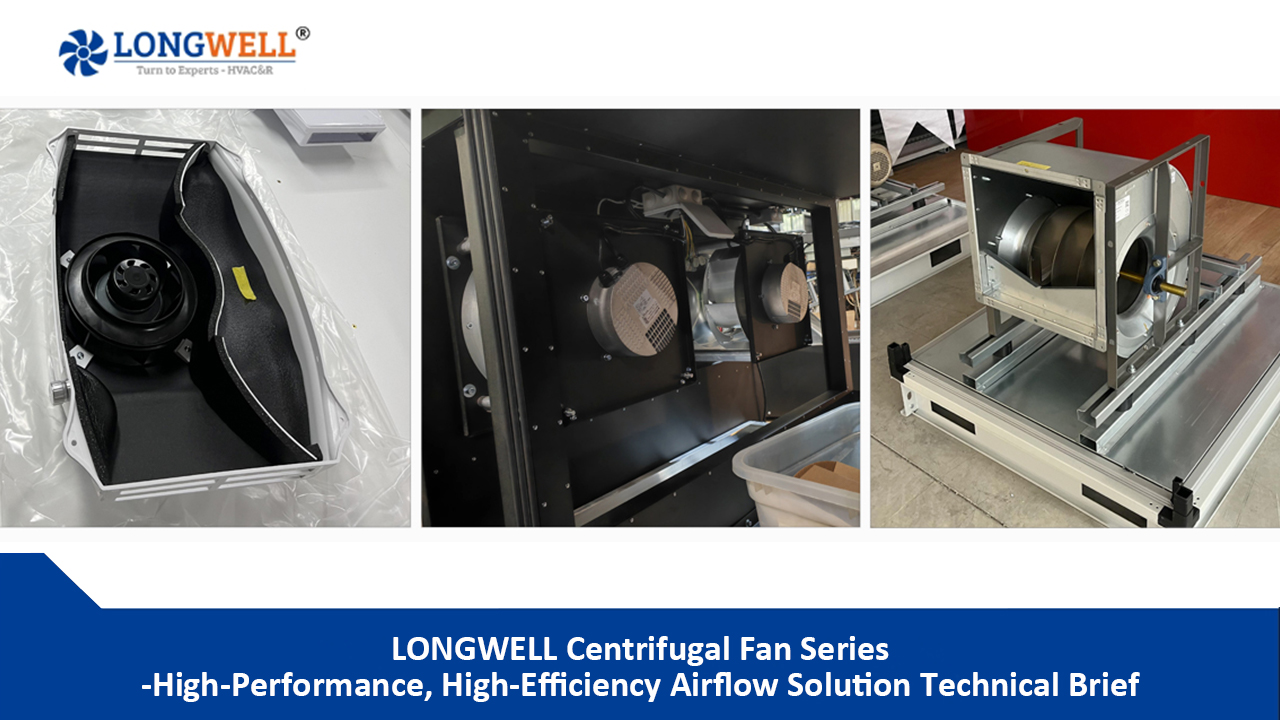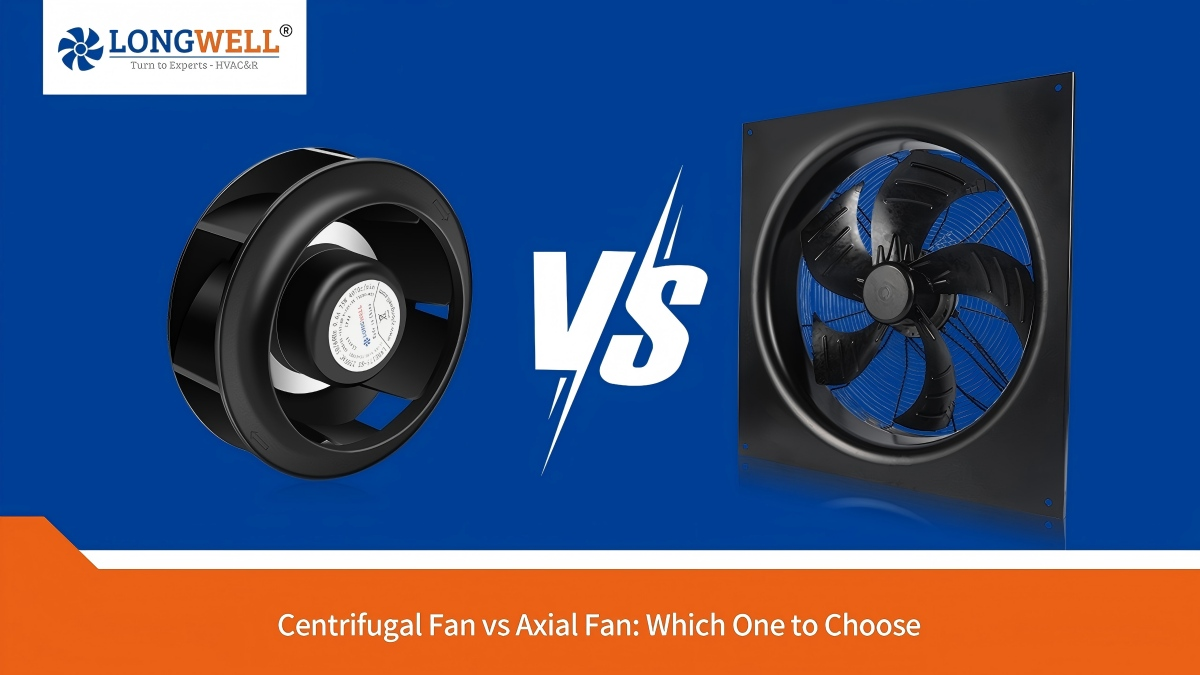When selecting a fan for your system or application, it’s essential to understand the differences between centrifugal fans and axial fans. Both fan types serve different purposes and come with distinct advantages, depending on the specific requirements of your ventilation or cooling needs. This guide will compare centrifugal fans and axial fans, providing insights into their working principles, ideal applications, energy efficiency, noise levels, and maintenance considerations.
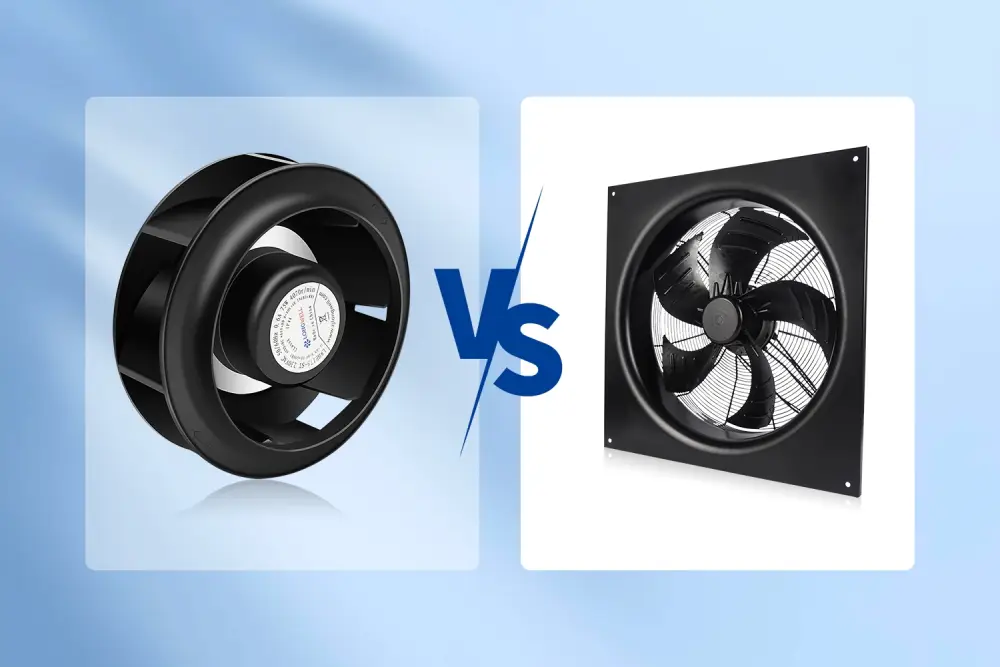
1. Centrifugal Fan vs Axial Fan: Working Principles and Key Differences
Centrifugal Fans: High Pressure, Lower Airflow
Centrifugal fans work by pulling air into the center of the fan through an inlet and accelerating it outward using a rotating impeller. The air is then directed at a 90-degree angle to the shaft, creating high-pressure airflow. This design makes centrifugal fans highly effective for systems requiring high-pressure environments, such as industrial ventilation, HVAC systems, and air filtration.
- Advantages:
- High pressure: Ideal for systems with resistance, such as ductwork and filters.
- Energy efficiency: Better performance in high-resistance applications.
- Durability: Can handle demanding environments.
- Disadvantages:
- Lower airflow: Not suitable for high-volume, low-pressure applications.
- Bulkier design: Larger and more complex in size.
For more information on industrial-grade centrifugal fans, check out our Industrial Centrifugal Fans.
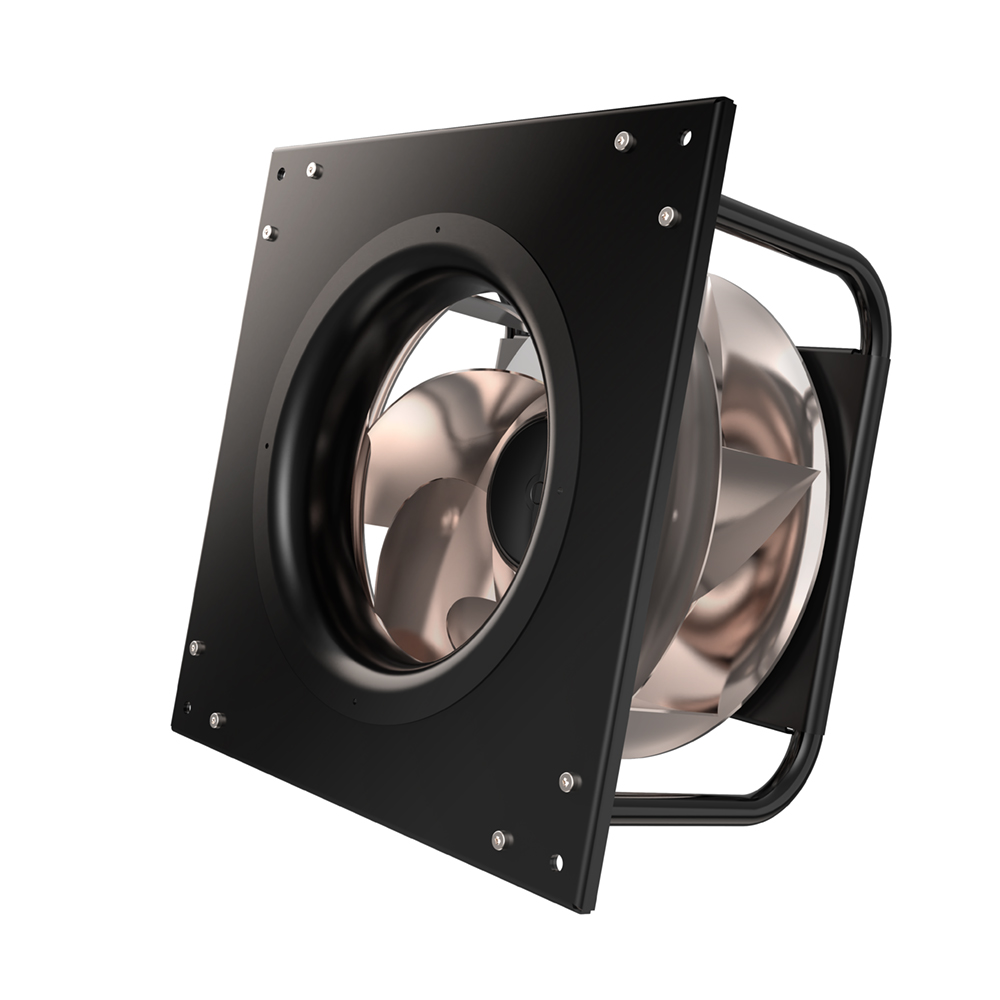
Axial Fans: High Airflow, Lower Pressure
Axial fans, on the other hand, work by pulling air along the axis of the fan blades, which directs the airflow parallel to the fan shaft. These fans are designed for high airflow, low-pressure applications and are widely used in cooling towers, air conditioning systems, and ventilation setups where large volumes of air need to be moved efficiently.
- Advantages:
- High airflow: Excellent for applications needing large volumes of air.
- Compact size: Smaller and lighter than centrifugal fans.
- Cost-effective: Easier to install and maintain.
- Disadvantages:
- Low pressure: Not suitable for systems requiring high-pressure airflow.
- Noise: May produce more noise compared to centrifugal fans, especially at higher speeds.
For a wide selection of AC axial fans, check out our AC Axial Fans.
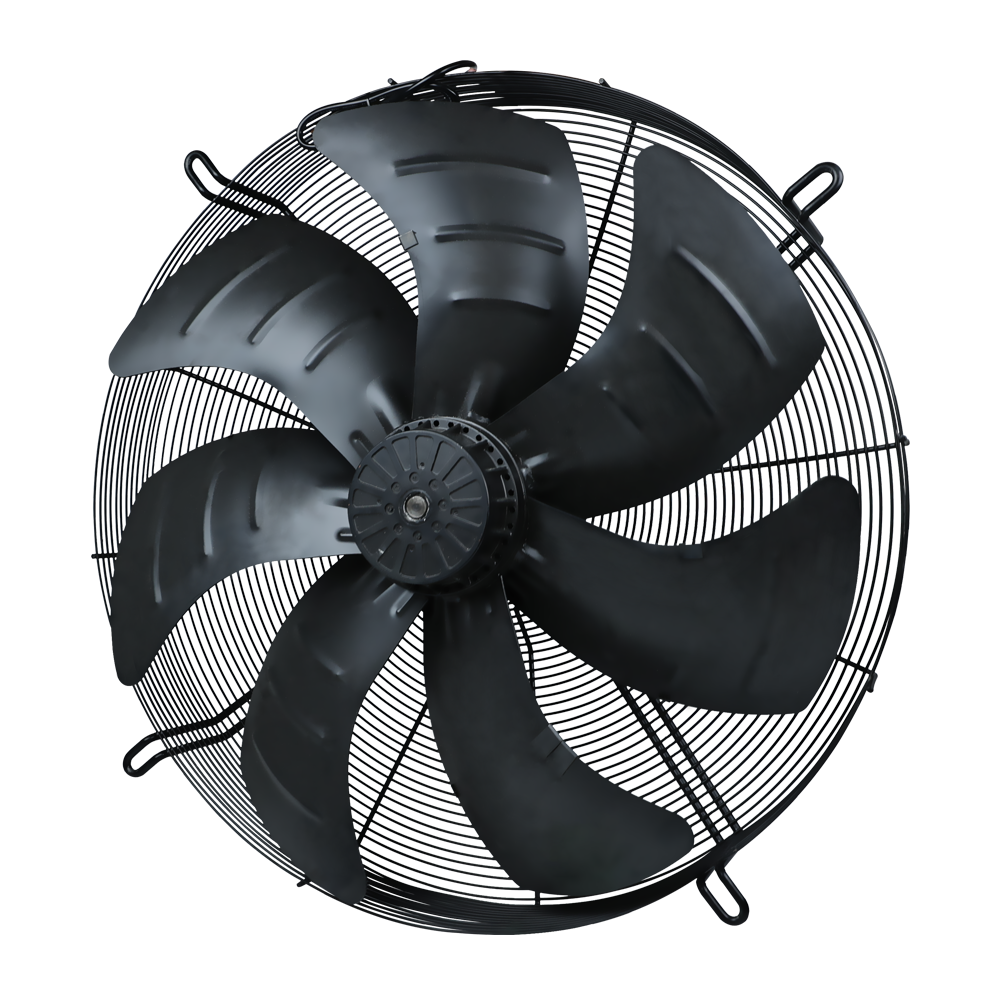
2. Applications: When to Use Centrifugal vs Axial Fans
Industrial and Commercial Applications
Centrifugal fans are typically used in high-pressure applications where airflow needs to overcome resistance, such as in industrial ventilation systems, exhaust fans in factories, and air filtration units. Centrifugal fans are ideal for systems that need to push air through ducts, filters, or long ventilation channels.
Axial fans are more suitable for applications that require high airflow with low resistance, such as cooling towers, HVAC systems, and large-scale ventilation systems. They are also commonly used in situations where space is limited, as their compact design makes them easier to integrate into smaller systems.
For more details on different fan models, you can visit Axial Fans and explore our full range of products.
Axial fans, on the other hand, work by pulling air along the axis of the fan blades, which directs the airflow parallel to the fan shaft. These fans are designed for high airflow, low-pressure applications and are widely used in cooling towers, HVAC systems, and ventilation setups where large volumes of air need to be moved efficiently.
- Advantages:
- High airflow: Excellent for applications needing large volumes of air.
- Compact size: Smaller and lighter than centrifugal fans.
- Cost-effective: Easier to install and maintain.
- Disadvantages:
- Low pressure: Not suitable for systems requiring high-pressure airflow.
- Noise: May produce more noise compared to centrifugal fans, especially at higher speeds.
For a wide selection of AC axial fans, check out our AC Axial Fans.
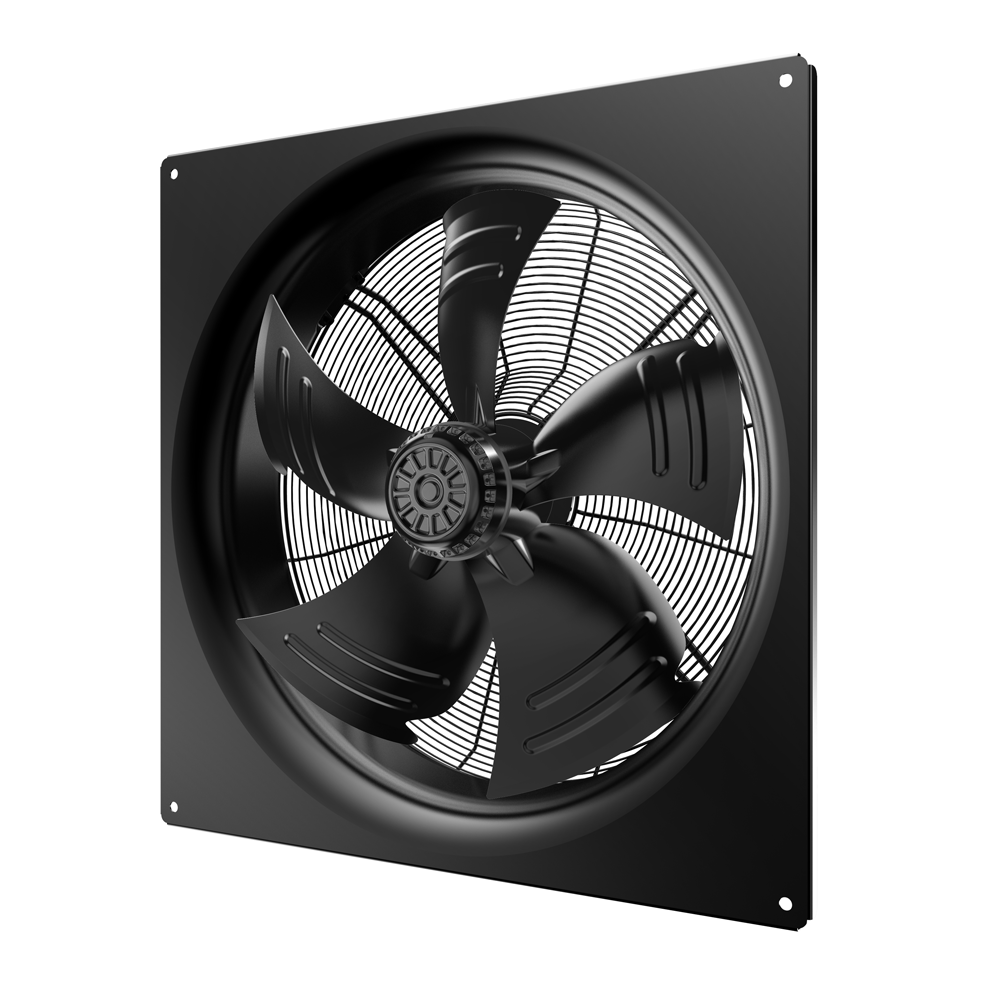
2. Applications: When to Use Centrifugal vs Axial Fans
Industrial and Commercial Applications
– Centrifugal Fans: These are typically used in high-pressure applications where airflow needs to overcome resistance, such as in industrial ventilation systems, exhaust fans in factories, and air filtration units. Centrifugal fans are ideal for systems that need to push air through ducts, filters, or long ventilation channels.
– Axial Fans: These fans are more suitable for applications that require high airflow with low resistance, such as cooling towers, HVAC systems, and large-scale ventilation systems. They are also commonly used in situations where space is limited, as their compact design makes them easier to integrate into smaller systems.
For more details on Industrial Centrifugal Fans, visit our Industrial Centrifugal Fans page.
Best Fan for Industrial Use
When choosing between centrifugal and axial fans for industrial use, you must consider the specific requirements of the application:
- Centrifugal fans excel in environments where high-pressure systems are needed, such as in factories with high dust loads, or in ventilation systems with long ductwork.
- Axial fans are better suited for large air volume requirements with minimal pressure needs, such as cooling in large industrial plants, where airflow is prioritized over pressure.
- Centrifugal fans excel in environments where high-pressure systems are needed, such as in factories with high dust loads, or in ventilation systems with long ductwork.
- Axial fans are better suited for large air volume requirements with minimal pressure needs, such as cooling in large industrial plants, where airflow is prioritized over pressure.
For a detailed look at our range of axial fans, check out our full selection of Axial Fans.
3. Energy Efficiency and Cost Savings: Centrifugal vs Axial Fans
Energy Efficiency Comparison
One of the most critical factors when selecting a fan is its energy efficiency, especially in large-scale or industrial applications.
- Centrifugal Fans: These fans are typically more energy-efficient in high-pressure applications. Since they can push air through filters or complex ducting systems, they often require less power for systems with high resistance. However, they may become less efficient in low-pressure environments.
- Axial Fans: Axial fans are known for their high-flow and low-pressure capabilities, which makes them highly energy-efficient when large volumes of air need to be moved over shorter distances. For systems where airflow is crucial, such as in cooling towers, they are generally more energy-efficient.
To compare the energy efficiency of different fan models, we recommend reviewing performance specifications for each fan type to find the best fit for your needs.
Cost Comparison
While centrifugal fans may have a higher initial cost due to their complex design, they often lead to long-term cost savings because of their ability to handle higher pressures and longer operational lifespans. In contrast, axial fans are more cost-effective upfront, but might require more frequent maintenance or replacement in demanding conditions due to their lower pressure handling.
4. Noise Levels and Vibration Analysis: Which Fan is Quieter?
Another important factor to consider when selecting a fan is the noise and vibration levels. This is especially crucial in environments where noise reduction is a priority, such as offices or residential areas.
Noise Levels
– Centrifugal fans are generally quieter than axial fans, especially at lower airflow rates. Their design minimizes airflow turbulence, which results in less noise generation. This makes them an excellent choice for applications in noise-sensitive environments like office buildings, hospitals, and laboratories.
– Axial fans, on the other hand, are more prone to generating noise, particularly at higher airflow speeds. The airflow pattern in axial fans often leads to increased noise levels, which can be problematic in spaces where sound control is critical.
For quieter applications, consider centrifugal fans, or look for specific low-noise designs of axial fans.
For more information, you can visit authoritative sources like HVAC Fan Noise Levels and Fan Noise Analysis – ScienceDirect.
5. Maintenance Requirements and Lifespan: Centrifugal vs Axial Fans
Understanding the maintenance needs and expected lifespan of a fan is crucial for making an informed investment. Regular maintenance can ensure optimal performance and extend the life of your fan.
Centrifugal Fans
Centrifugal fans require regular maintenance to ensure optimal performance, especially in systems with high dust loads or heavy filtration. Regular checks on the impeller and motor, as well as occasional lubrication of moving parts, are recommended. However, when maintained properly, centrifugal fans have a long lifespan, often exceeding 10-15 years, making them a cost-effective long-term solution.
Axial Fans
Axial fans generally require less maintenance than centrifugal fans due to their simpler design. However, their lifespan may be slightly shorter, typically 5-10 years, depending on usage conditions. Regular cleaning of blades and checking for motor wear are crucial for maintaining performance and avoiding premature failure.
For comprehensive maintenance tips and guides, check out additional resources on Centrifugal Fan Maintenance – Engineering Choice and Axial Fan Maintenance .

